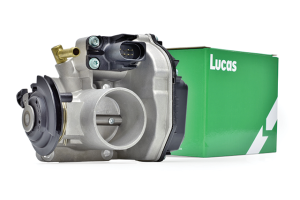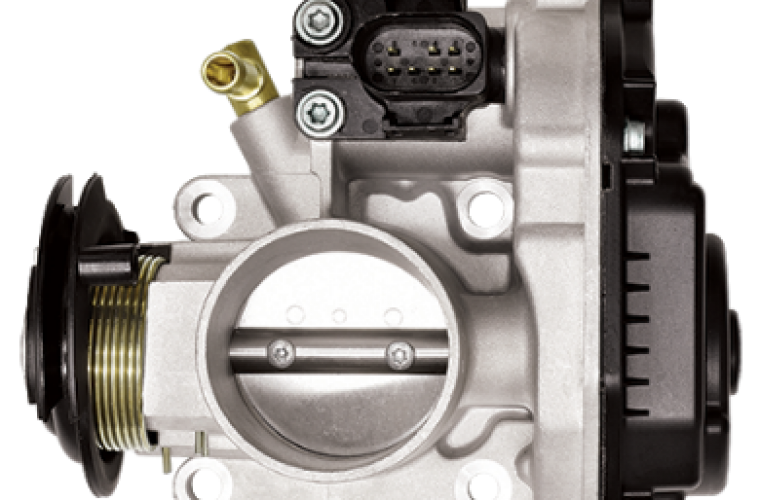Often attached to the air mass meter, it incorporates a butterfly valve that opens and closes, allowing air into the engine in response to the position of the accelerator pedal.
Traditionally the throttle body was connected directly to the accelerator pedal via a cable.
As the pedal was operated the valve was opened or closed via the cable.
Whilst this mechanical type is still a common repair on older vehicles; it is almost redundant in modern vehicles that feature electronically controlled throttle bodies.
These ‘drive-by-wire’ or ‘fly-by-wire’ throttle systems use a host of electronic sensors, modules and actuators to operate throttle as follows:
1. An accelerator pedal sensor communicates pedal movement and the drivers intention to accelerate to the electronic control module (ECM).
Earlier versions used a separate electronic throttle control (ETC) module linked to the vehicles main ECM, while newer systems communicate directly to the main ECM.
2. The ECM operates an actuator (or servomotor) on the throttle body to open or close the valve.
3. A throttle position sensor (TPS) on the throttle body communicates the valve position back to the ECM to ensure everything is operating as intended.
Any discrepancies here will result in a fault code being generated and illumination of the check engine light on the dash to alert the driver.![]()
Causes of failure
Failure of the throttle body is usually a result of the butterfly valve sticking, which in turn is usually caused by damage or contamination.
Broken wires resulting in open circuits and bad connections, often caused by corrosion, are also worth checking for.
Like many components, the throttle body can simply fail over time due to usual wear and tear.
Symptoms of throttle body or TPS failure include delayed and/or poor acceleration, loss of power, erratic idling, stalling, limp mode, gear changing issue and an illuminated ‘check engine’ light.![]()
Replacing the throttle body
 It’s likely that the old throttle body failed due to contamination causing the valve to stick.
It’s likely that the old throttle body failed due to contamination causing the valve to stick.
Failure to clean the system before fitting a fresh clean part is a common oversight that can lead to premature failure of the new part.
Check and clean all air intake ducting and components, such as the air mass meter, as well as ensuring air filters are clean.
After replacing the part, resetting the ECU may be required in order for it to recognise the replacement and turn off the check engine light.
The new range from Lucas Electrical consists of 50 part numbers that cover over 2,000 applications and in excess of 5,000,000 vehicles on the road.
All throttle bodies are covered by Lucas Electrical’s three-year ‘no-quibble’ (excluding labour) warranty for complete peace of mind.
For further information, select ‘more details’ below.








Home Page › Forums › Everything you ought to know about throttle bodies